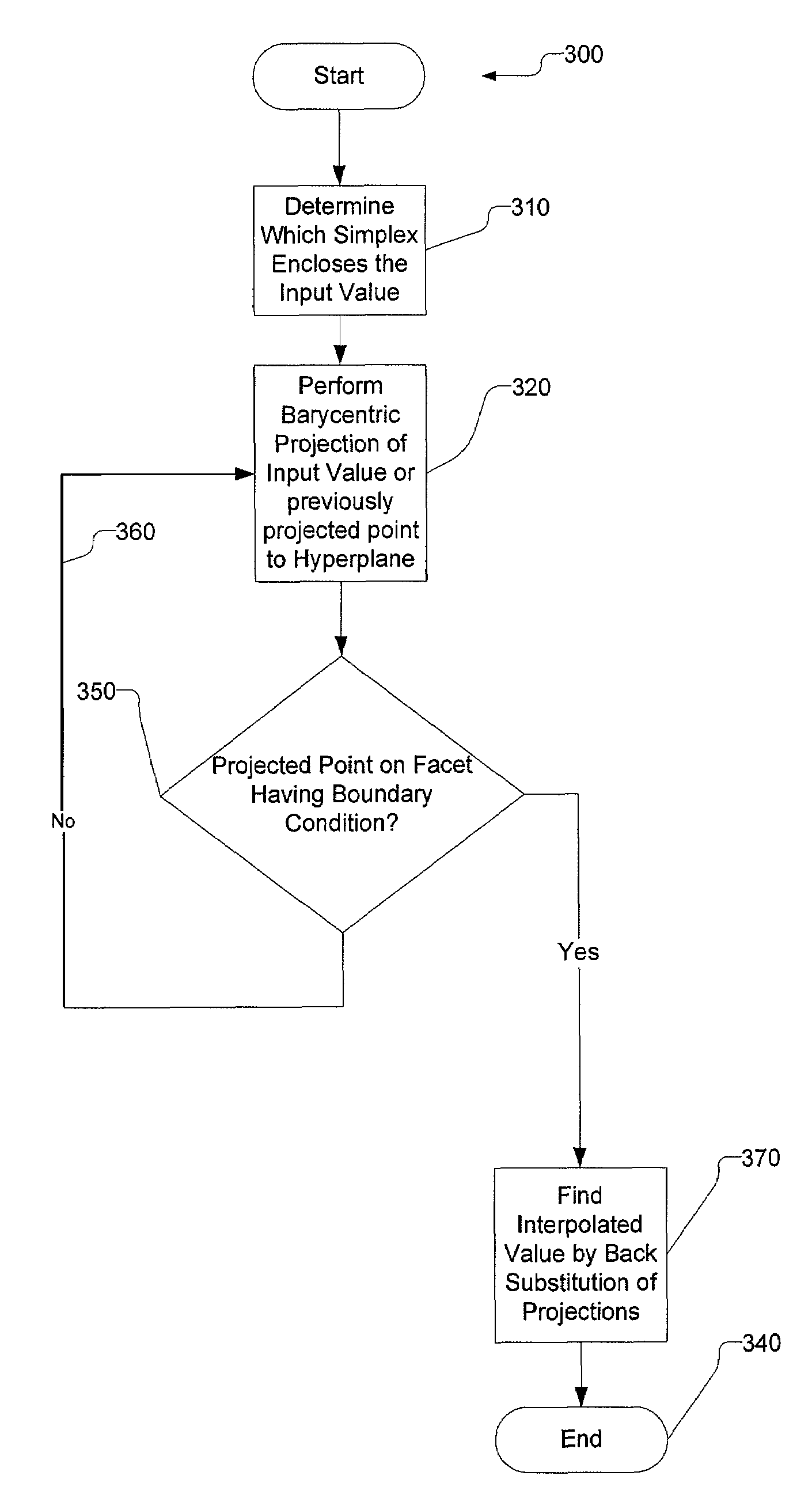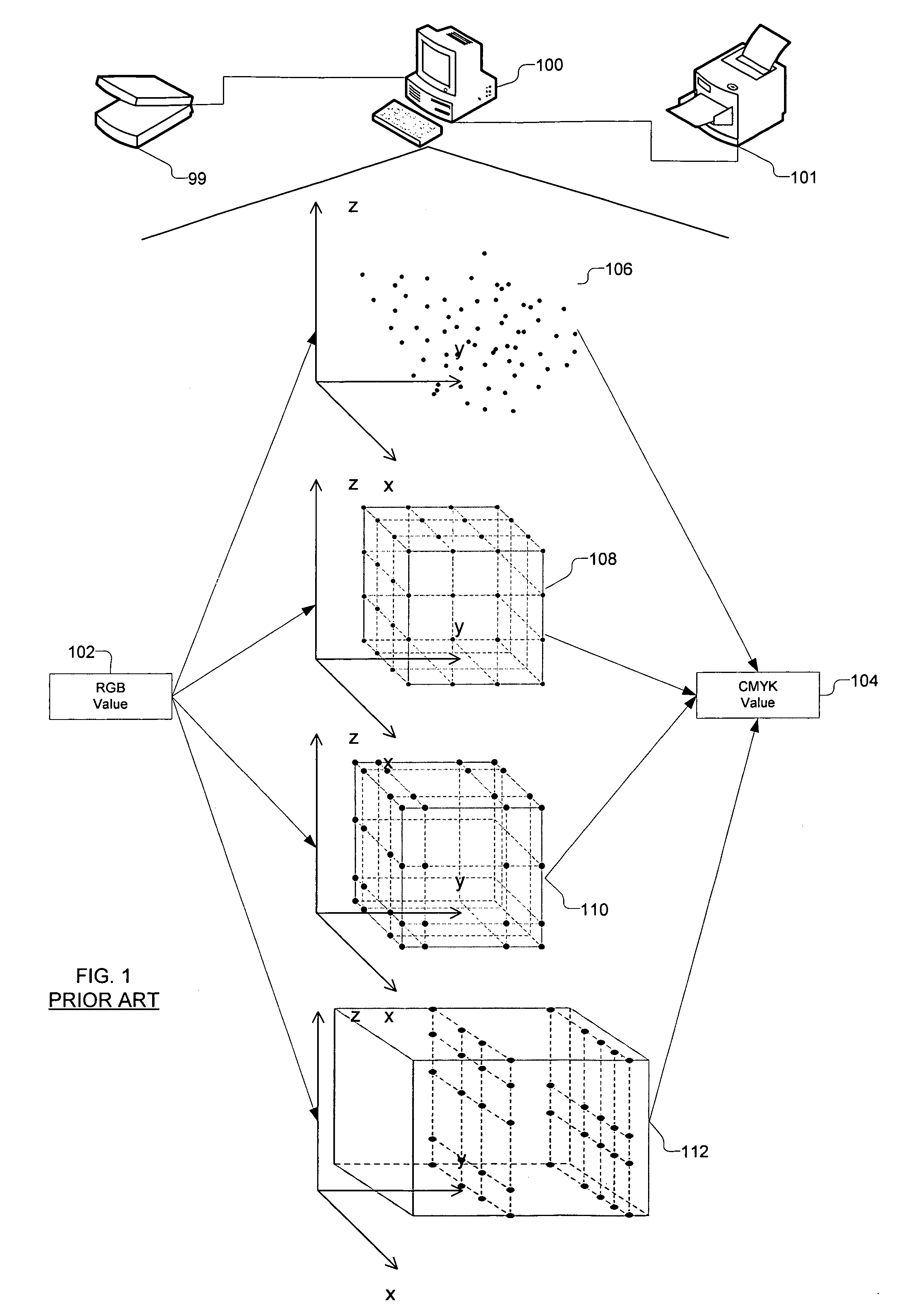Color conversion using barycentric projections
a barycentric projection and color conversion technology, applied in the field of color conversion, can solve the problems of grids (possibly non-uniform sampled), methods are generally slow, and enclosing cells can still be determined quite easily, but not as efficiently,
- Summary
- Abstract
- Description
- Claims
- Application Information
AI Technical Summary
Benefits of technology
Problems solved by technology
Method used
Image
Examples
Embodiment Construction
[0032]The present invention is directed to a method of interpolation using LUTs in any arbitrary n-dimensional color space. However, throughout the detailed description, examples are given for 2-dimensional and 3-dimensional spaces, it being understood that the interpolation process may be performed in any n-dimensional color space. Therefore, the following terminology is used in order to identify the types of geometric objects representing the manipulations performed during the interpolation process:[0033]A hypercube is a generalization of a measure polytope, such as a 3-cube, to n dimensions. Hypercubes of lower dimension have specific names. For example, a 1-hypercube is a line segment, a 2-hypercube is a square, a 3-hypercube is a cube, and a 4-hypercube is a tesseract.[0034]A simplex is a generalization of a tetrahedral region of space to n dimensions. The simplex is so-named because it represents the simplest possible polytope in any given space. For example, a 2-simplex is an...
PUM
 Login to View More
Login to View More Abstract
Description
Claims
Application Information
 Login to View More
Login to View More - R&D
- Intellectual Property
- Life Sciences
- Materials
- Tech Scout
- Unparalleled Data Quality
- Higher Quality Content
- 60% Fewer Hallucinations
Browse by: Latest US Patents, China's latest patents, Technical Efficacy Thesaurus, Application Domain, Technology Topic, Popular Technical Reports.
© 2025 PatSnap. All rights reserved.Legal|Privacy policy|Modern Slavery Act Transparency Statement|Sitemap|About US| Contact US: help@patsnap.com



